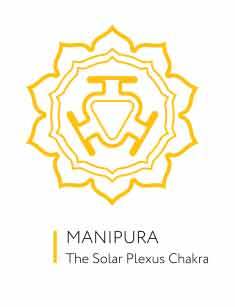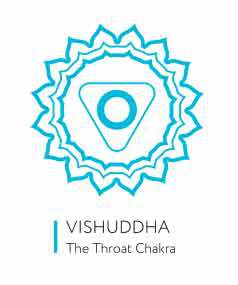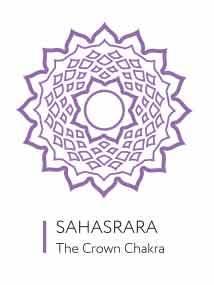Different meditation practices are used for different purposes.Each practice aims at resulting in the well being of an individual.People explore different types of meditation and at times a blende of them to figure out the best combination which heals the body and mind.
Different types of meditation are:
1. Body scan meditation
the body scan as a powerful way to connect with the physical body. This has the immediate effect of helping to draw attention to and then release any areas of tension or holding. Thus, body scan meditation is primarily a relaxing practice, although other more uncomfortable sensations, such as tingling, burning or numbness may also arise.
Body scan meditation is one type of mindfulness meditation which promotes greater awareness of the physical body. It uses physical sensations and visualization as an anchor to root the mind in the physical body and in the present moment. It may be incorporated into a yoga class or used as a practice in its own right.
The aim in body scan meditation is to become aware of different areas of the body and tune into how each body part feels, with curiosity and non-judgment. The aim is to cultivate an open, compassionate attitude. The focus may vary from wider areas of the body to much smaller, narrower regions.
In guided forms of body scan meditation, the yogi is usually instructed to lie down and then direct their attention to each body part one at a time, typically starting with the lower body and moving to the upper body. A practice may last 20 to 45 minutes.
Sit in a comfortable place and fully relax your body. You don't need to be lying down, but it helps, particularly if you're doing a body scan meditation before you fall asleep. Try to get into a position that is comfortable enough for you to fully relax without becoming so comfortable that you may fall asleep if you're not able to nap or sleep at the moment. Let your breathing slow down, and start breathing from your belly instead of from your chest, letting your abdomen expand and contract with each breath. If you find your shoulders rising and falling with each breath, focus more on breathing from your belly, as though a balloon is inflating and deflating in your abdomen with each breath. For more practice on this, try these breathing exercises.
2. Mindfulness meditation
meditation is a mental training practice that involves focusing your mind on your experiences (like your own emotions, thoughts, and sensations) in the present moment. “It is simply the act of paying attention to whatever you are experiencing, as you experience it,” explains Kate Hanley, author of "A Year of Daily Calm." “By choosing to turn your attention away from the everyday chatter of the mind and on to what your body is doing, you give the mind just enough to focus so that it can quiet down.”
Mindfulness meditation can involve breathing practice, mental imagery, awareness of body and mind, and muscle and body relaxation.
1. Find a quiet and comfortable place. Sit in a chair or on the floor with your head, neck, and back straight but not stiff.
2. Try to put aside all thoughts of the past and the future and stay in the present.
3. Become aware of your breath, focusing on the sensation of air moving in and out of your body as you breathe. Feel your belly rise and fall, and the air enter your nostrils and leave your mouth. Pay attention to the way each breath changes and is different.
4. Watch every thought come and go, whether it be a worry, fear, anxiety or hope. When thoughts come up in your mind, don't ignore or suppress them but simply note them, remain calm and use your breathing as an anchor.
5. If you find yourself getting carried away in your thoughts, observe where your mind went off to, without judging, and simply return to your breathing. Remember not to be hard on yourself if this happens.
6. As the time comes to a close, sit for a minute or two, becoming aware of where you are. Get up gradually.
How does mindfulness work?
Some experts believe that mindfulness works, in part, by helping people to accept their experiences—including painful emotions—rather than react to them with aversion and avoidance.
It’s become increasingly common for mindfulness meditation to be combined with psychotherapy, especially cognitive behavioral therapy. This development makes good sense, since both meditation and cognitive behavioral therapy share the common goal of helping people gain perspective on irrational, maladaptive, and self-defeating thoughts.
Mindfulness techniques
There is more than one way to practice mindfulness, but the goal of any mindfulness technique is to achieve a state of alert, focused relaxation by deliberately paying attention to thoughts and sensations without judgment. This allows the mind to refocus on the present moment. All mindfulness techniques are a form of meditation.
Basic mindfulness meditation – Sit quietly and focus on your natural breathing or on a word or “mantra” that you repeat silently. Allow thoughts to come and go without judgment and return to your focus on breath or mantra.
Body sensations – Notice subtle body sensations such as an itch or tingling without judgment and let them pass. Notice each part of your body in succession from head to toe.
Sensory – Notice sights, sounds, smells, tastes, and touches. Name them “sight,” “sound,” “smell,” “taste,” or “touch” without judgment and let them go.
Emotions – Allow emotions to be present without judgment. Practice a steady and relaxed naming of emotions: “joy,” “anger,” “frustration.” Accept the presence of the emotions without judgment and let them go.
Urge surfing – Cope with cravings (for addictive substances or behaviors) and allow them to pass. Notice how your body feels as the craving enters. Replace the wish for the craving to go away with the certain knowledge that it will subside.
3. Chakra meditation
Chakra meditation begins by sitting in a comfortable position with your spine straight, but not ridged. You then want to focus on each part of your body starting with your feet and working up. As you do this, have that part of the body relax and let the stress melt away.
- The next step in chakra meditation is to focus on the breath. Do not force it, but let the breathing become steady and deep. The mind will most likely wonder, just gentle bring it back to the breath and maintain the focus on each inhalation and exhalation you take. Visualize the oxygen coming into your lungs and passing into the bloodstream. Visualize it nourishing all the muscles, organs and cells of your body and then see it removing the toxins from your body which you expel with each breath.
- Next in chakra meditation you want to visualize the beating of the heart and the perfect function of the body. See how all the parts work together in complete harmony. See how the breath sustains all these parts and the body as a whole. Become aware of how the breath is the life giving force of the entire organism you call your body.
- Next in chakra meditation you should imagine a life giving energy that you are breathing in along with the air. See this energy as a yellowish orange color. See this energy encompass your entire body and infuse your aura. As this energy infuses your aura, imagine the aura growing stronger, brighter and being charged with this incredible energy. Do this step gradually, let the aura grow brighter little by little and keep this energy flowing in with each breath.
- The next thing we want to do in chakra meditation is energize each individual chakra. Start with the root chakra in the lower back. Imagine a clockwise swirl of energy and the energy you breath in feeds this swirl and makes it strong and brighter. We want to next imagine another source of energy that is coming up from the earth. This is the same life giving energy and it adds to the swirling energy at the root chakra.
- Next in chakra meditation we want to move up to the sacral chakra. Then one by one the solar plex chakra, heart chakra, throat chakra, head chakra and finally the crown chakra, infusing each with the life giving energy. Take your time with this and do not worry about spending more time on one chakra if you need to. It is strongly advised to always work from the bottom, going up and not skip around. Each chakra will influence the other chakras and energizing a higher chakra before a lower chakra could have an adverse effect.
- The last step in chakra meditation is to visualize all the chakras at once being feed by this energy coming in from the breath and up from the earth. Remember to see the chakras and your aura become brighter, clearer and super charged from this life giving energy.
- Finally we can open our eyes and relax a couple minutes with our eyes open. Pay attention to your body and how incredible and energized you now feel. Try to practice 15 – 30 minutes each sitting. Enjoy, this is a really good, uplifting chakra meditation.
1. Introducing The 7 Chakras
While there are hundreds of different chakras in the body representing energy centers large and small, it’s most productive to focus on the seven core chakras. These are the major points that have been identified as critical by multiple spiritual traditions. Here they are in ascending order:
1. Root Chakra (Muladhara) 
Color: Red
Mantra: LAM
This chakra is found at the base of your spine. It governs your connection to the wider world, your fundamental needs for food, shelter, and stability. Issues with your root chakra can cause a number of emotional and physical disturbances, especially digestive ailments.
2. Sacral Chakra (Svadhisthana)
Color: Orange
Mantra: VAM
The sacral chakra rests just below the navel. It’s intimately involved in the creative process; it governs both your reproductive organs and your imagination. A balanced sacral chakra is essential for coping with new experiences and exploring the world.
3. Solar Plexus Chakra (Manipura)
Color: Yellow
Mantra: RAM
Your solar plexus chakra sits above your navel, in your stomach. This chakra is fundamental to digestion, but it also has an important mental and spiritual role. You can only embrace the things you experience and understand your place in them when your solar plexus chakra is in balance.
4. Heart Chakra (Anahata)
Color: Green
Mantra: YAM
On a physical level, the heart chakra, which is located at the center of the cardiovascular system, is intimately tied to the organs around it. Imbalances here can be responsible for respiratory problems and high blood pressure. Mentally, an open and balanced heart chakra allows you to form emotional connections with others.
5. Throat Chakra (Visshuddha)
Color: Blue
Mantra: HAM
Located in the throat (near the thyroid glands), this chakra governs communication and self-expression. A blockage in the throat chakra can cause feelings of isolation and a range of physical issues, from susceptibility to infection to hormonal imbalances.
6. Third Eye Chakra (Ajna)
Color: Indigo
Mantra: SHAM
The third eye chakra lies just above the junction of your eyebrows. This chakra is in charge of insight and intuition on both a spiritual and a mundane level. Keeping the third eye chakra in balance allows you to see how the world around you is interconnected and makes it easier to understand your place in it.
 7. Crown Chakra (Sahasrara)
7. Crown Chakra (Sahasrara)
Color: Purple / White
Mantra: OM
In many ways, the crown chakra, which sits on the top of your head, is the “business end” of the primary chakras. When your chakras are in balance and your energy is healthy, the crown chakra serves as a power connection to the wider world. Maintaining a healthy crown chakra leads to a sense of peace, well-being, and confidence.







0 comments:
Post a Comment